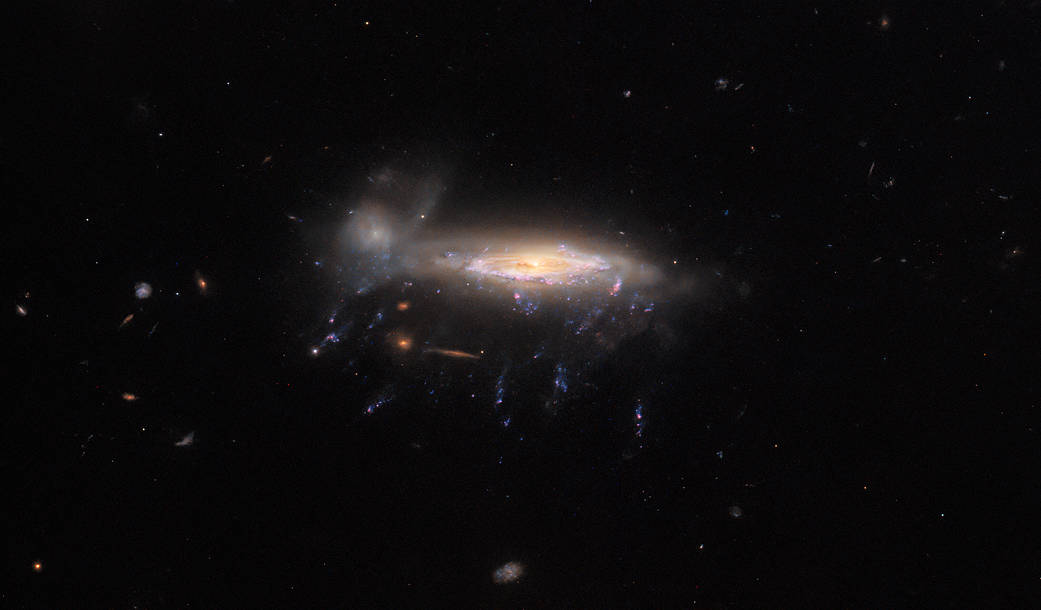This image taken with the NASA/ESA Hubble Space Telescope shows JO204, a ‘jellyfish galaxy’ so named for the bright tendrils of gas that appear in this image as drifting lazily below JO204’s bright central bulk. The galaxy lies almost 600 million light-years away in the constellation Sextans. Hubble observed JO204 as part of a survey performed with the intention of better understanding star formation under extreme conditions.
While the delicate ribbons of gas beneath JO204 may look like floating jellyfish tentacles, they are in fact the outcome of an intense astronomical process known as ram pressure stripping. Ram pressure is a particular type of pressure exerted on a body when it moves relative to a fluid. An intuitive example is the sensation of pressure you experience when you are standing in an intense gust of wind – the wind is a moving fluid, and your body feels pressure from it. An extension of this analogy is that your body will remain whole and coherent, but the more loosely bound things – like your hair and your clothes – will flap in the wind. The same is true for jellyfish galaxies. They experience ram pressure because of their movement against the intergalactic medium that fills the spaces between galaxies in a galaxy cluster. The galaxies experience intense pressure from that movement, and as a result their more loosely bound gas is stripped away. This gas is mostly the colder and denser gas in the galaxy – gas which, when stirred and compressed by the ram pressure, collapses and forms new stars in the jellyfish’s beautiful tendrils.
Text credit: European Space Agency (ESA)
Image credit: ESA/Hubble & NASA; M. Gullieuszik and the GASP team
这张由NASA/ESA哈勃太空望远镜拍摄的图像显示了JO204,这是一个“水母星系”,因其明亮的气体卷须而得名,在这张图像中,这些气体卷须懒洋洋地漂浮在JO204明亮的中心下方。该星系位于距离地球近6亿光年的六分仪座。哈勃对JO204的观测是一项调查的一部分,目的是更好地了解极端条件下的恒星形成。
虽然JO204下面的精致气体带看起来像漂浮的水母触须,但它们实际上是一种强烈的天文过程的结果,这种过程被称为撞击压力剥离。撞击压力是当物体相对于流体运动时施加在物体上的一种特殊类型的压力。一个直观的例子是,当你站在强烈的阵风中时,你会感受到压力——风是一种流动的流体,你的身体会从中感受到压力。这个类比的延伸是,你的身体将保持完整和连贯,但更松散的东西——比如你的头发和衣服——将在风中飘动。水母星系也是如此。它们经历撞击压力是因为它们的运动与星系团中星系间的星系间介质相反。星系在这种运动中经历了巨大的压力,因此它们更松散的结合气体被剥离。这些气体主要是星系中温度较低、密度较大的气体——当这些气体受到撞击压力的搅动和压缩时,就会在水母美丽的卷须中坍塌并形成新的恒星。
文字来源:欧洲航天局(ESA)
影像来源:ESA/Hubble & NASA; M. Gullieuszik and the GASP team



